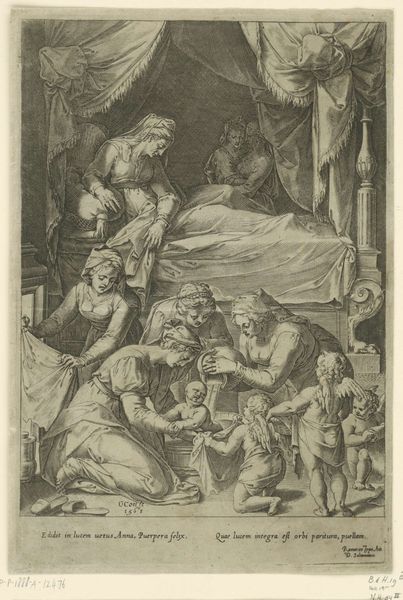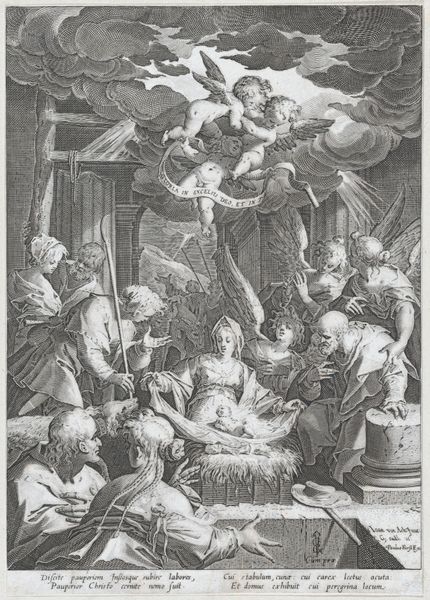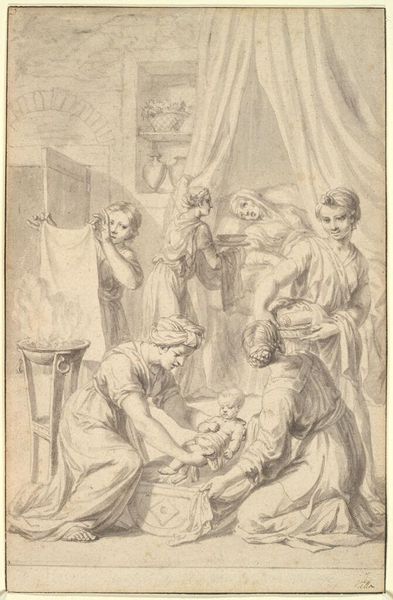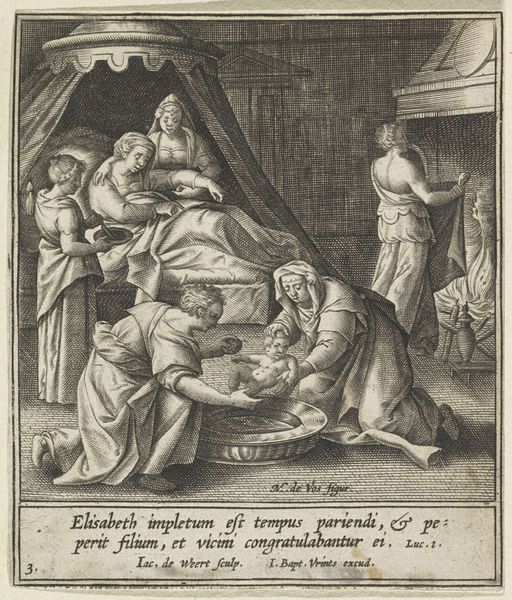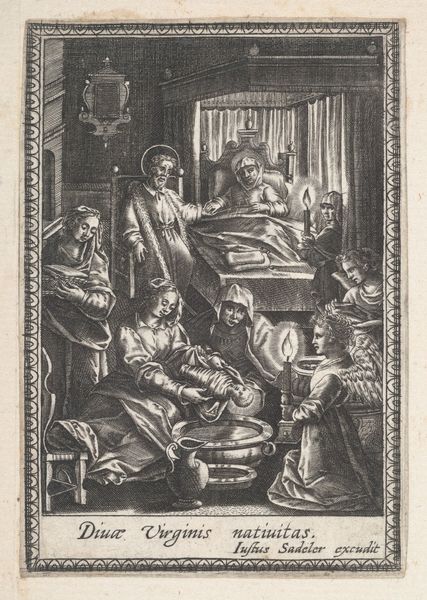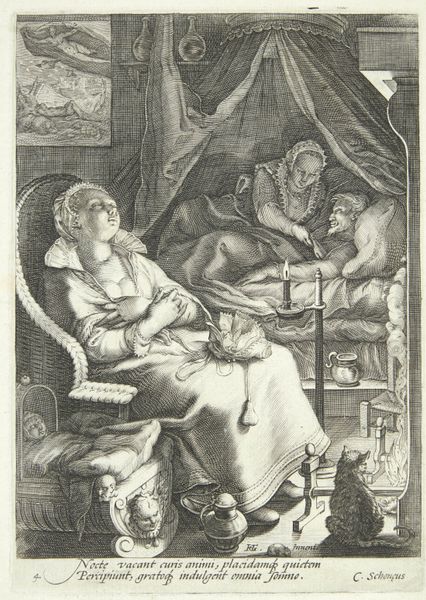
print, engraving
#
narrative-art
# print
#
figuration
#
11_renaissance
#
genre-painting
#
history-painting
#
engraving
Dimensions: height 285 mm, width 200 mm
Copyright: Rijks Museum: Open Domain
Editor: This engraving, "Birth of the Virgin," is attributed to Anonymous and dates back to around 1568-1618. It’s part of the Rijksmuseum collection. The first thing I notice is the contrast between the dark, densely-etched areas and the lighter spaces—it really creates a dynamic composition. What catches your eye in this piece? Curator: The interplay of line and form here is quite compelling. Notice how the artist uses the density of lines to define the figures and create a sense of depth. The composition, while seemingly chaotic, is actually carefully structured. Can you see how the figures are arranged to lead the eye through the scene? Editor: I see the clusters, yes, how some figures face inward while others look out. Does the medium, being an engraving, impose particular constraints or affordances in this regard? Curator: Indeed. The incised lines dictate the forms, shadows, and textures achievable. It allows for fine detail, yes, but the lack of color and reliance on value contrasts demand a heightened sensitivity to tonal relationships to convey spatial depth and material properties. Do you notice the patterns and repetitions created by these lines, and what effects they may bring? Editor: Now that you mention it, the parallel lines create a sort of visual rhythm. It almost gives the scene a sense of movement, even though it's static. So the figures and composition achieve depth through skillful use of this technique? Curator: Precisely. Through considered design, and by directing the viewer’s sight via compositional and tonal hierarchies. Considering line weight and distribution, the artist delivers a narrative. What is being expressed? Editor: It’s been fascinating to examine how an artist can construct depth and movement through such meticulous, structured marks, and consider a range of semiotic interpretations from the line distributions! Curator: Indeed. Formalism can offer invaluable tools for our exploration.
Comments
No comments
Be the first to comment and join the conversation on the ultimate creative platform.
